Product Backlog Management Strategies
Learn practical strategies for effective product backlog management in Agile, including prioritisation, refinement, stakeholder engagement, and tools …
Applying practical, experience-based problem-solving in complex environments.


Pragmatic Thinking is the application of practical, experience-based problem-solving in complex environments, enabling teams to navigate challenges effectively. This approach prioritises actionable insights over theoretical constructs, fostering a mindset that values real-world applicability. By focusing on what works in practice, teams can adapt their strategies to deliver value predictably and sustainably.
This concept is crucial in environments characterised by uncertainty and rapid change, as it encourages a culture of experimentation and learning. Teams employing Pragmatic Thinking are better equipped to identify and implement solutions that resonate with their specific context, rather than relying solely on prescribed methodologies. This adaptability not only enhances responsiveness to customer needs but also promotes resilience in the face of evolving market dynamics.
Pragmatic Thinking supports long-term systemic improvements by embedding a continuous learning ethos within the organisation. It empowers teams to reflect on their experiences, iterate on their processes, and refine their approaches, ultimately leading to enhanced performance and value delivery. By integrating this mindset into daily practices, organisations can cultivate a robust framework for sustained innovation and effective problem-solving, ensuring they remain competitive and relevant in their respective fields.
Learn practical strategies for effective product backlog management in Agile, including prioritisation, refinement, stakeholder engagement, and tools …
Explains how immersive learning helps Scrum Masters apply knowledge through real-world practice, feedback, and collaboration, leading to lasting …
Learn how evidence-based metrics drive organisational success, avoid negative behaviours, and enable transparent, data-driven decisions for leaders …
Explains the true responsibilities of a Scrum Master, how to maximise team effectiveness, teach Scrum principles, and address organisational …
Step-by-step guide to building an automated Release Management pipeline for professional developers, covering build, deployment, environment setup, …
Learn how Agile teams can handle harsh Sprint Review feedback by analysing root causes, engaging stakeholders, and deciding whether to halt, pivot, or …
Learn how to identify and measure unrealised value in your product using Evidence-Based Management, key metrics, and actionable steps to improve …
Explores how evidence-based management uses data-driven practices to improve organisational agility, value delivery, and decision-making in both …
Explains how to use a single Team Project and Team Field in TFS to streamline cross-team work item tracking, reporting, and collaboration across …
Explains when agile consulting is best used, highlighting its role in building internal leadership, rapid problem-solving, and sustainable …
Validating product value requires releasing features to real users in production, gathering feedback, and measuring usage, satisfaction, and business …
Learn how Kanban boosts transparency in software engineering, helping teams visualise workflows, identify bottlenecks, and drive continuous …
Ensuring every team member understands and connects their daily work to the product vision and strategic goals is key to true Agile alignment, …
Explores why Agile fails without addressing systemic issues, highlighting the need for organisational change, meaningful metrics, and the courage to …
Learn how Evidence-Based Management helps organisations measure delivered value using key metrics like customer satisfaction, employee engagement, and …
Learn how to build a compelling business case for agile adoption by aligning benefits with key metrics, stakeholder goals, and inclusive change …
Change in organisations is a continuous, evolutionary process driven by experimentation and adaptation, not a one-time transformation or fixed end …
Explores how project managers can shift from control to collaboration, adopt agile mindsets, embrace uncertainty, and foster team empowerment for …
Discover how hands-on Scrum training using Minecraft helps learners experience project chaos, apply agile principles, and gain practical insights into …
Learn how to track, manage, and optimise product development costs by empowering teams with financial awareness, key metrics, and continuous …
Immersive learning helps aspiring agile leaders overcome cultural barriers by providing time, practical experiments, and peer feedback to drive real …
Explores how to maintain a lean, transparent product backlog that balances current needs with future readiness, enabling teams to adapt and maximise …
Explains how Agile teams can measure and improve Time to Market using key metrics like lead time, cycle time, and time to fix to deliver value to …
Learn the core skills and best practices for effective product backlog management, including risk, value, sizing, learning, and refinement to maximise …
Explores how Agile teams can avoid overloading backlogs, Sprints, and products by focusing on prioritisation, value delivery, and lean, effective …
Explains how agile practices help teams manage complexity, adapt to change, and deliver value faster in modern product development, compared to …
Explores the Ghana Police Service’s shift to a modern, professional model using servant leadership, agile frameworks, and strategic change to restore …
Learn how product owners use Evidence-Based Management (EBM) to make data-driven decisions, track key value metrics, and maximise product value and …
Emphasises the importance of flexibility and pragmatism in Scrum, encouraging teams to adapt frameworks to their context rather than rigidly following …
Learn how to quickly turn user feedback into actionable work items in Agile teams, improving product value through fast feedback loops, …
Learn practical strategies to boost product development by using experimentation, agile methods, and collaboration to increase user value, reduce …
Explores how businesses can boost agility and innovation by adapting decision-making, avoiding bureaucracy, and fostering continuous learning in …
Learn how to turn scope creep into an advantage by adopting Agile methods, focusing on value delivery, and adapting to changing requirements in …
Explains why Agile is not about speed but about prioritising valuable work, adapting to feedback, and avoiding wasted effort to deliver products that …
Explains why effective planning is essential in Agile and Scrum, debunking myths about planning, and highlights strategies for teams of all sizes to …
Explores how rigid hierarchies in product backlogs can hinder agility, advocating for flatter, value-focused approaches to manage complexity in …
Guidance on running live virtual Scrum classes using Microsoft Teams and Mural, focusing on tech setup, safe collaboration, self-organising teams, and …
Learn to identify, challenge, and validate assumptions in product development, avoid the “Feature Factory” trap, and build products that truly meet …
Learn how Agile principles help businesses improve predictability by addressing challenges, optimising systems, aligning goals, and adapting to change …
Explains why recessions are ideal for organisations to adopt agile, highlighting adaptability, rapid learning, and customer-focused growth in …
Explains how to create reliable forecasts in agile projects by using flow metrics like cycle time and throughput, and shifting from project-based to …
Explores how Visual Studio 2012 supports continuous quality enablement, automated testing, and rapid delivery in modern software development for …
Learn key steps, common pitfalls, and best practices for migrating data from legacy TFS systems to Azure DevOps, including identity alignment, …
Explains how product goals serve as intermediate strategic goals, guiding agile organisations through uncertainty using experimentation, outcomes, and …
Explores how spaced learning in Agile and Scrum boosts retention, real-world application, and collaboration compared to traditional intensive courses.
Explores how immersive, hands-on learning in Scrum boosts knowledge retention, practical skills, and continuous improvement compared to traditional …
Explains how empiricism, continuous observation, inspection, and adaptation, drives Agile success by enabling teams to respond effectively to real …
Running an Applying Professional Scrum workshop helps organisations build agile skills, improve teamwork, and adopt Scrum practices through hands-on, …
Evidence-based management uses data-driven decisions to help organisations achieve business outcomes, adapt to market changes, and maximise value …
Explores how immersive learning in Agile and Scrum boosts retention and real-world application by using spaced sessions, practical assignments, and …
Explains why product ownership and product management are deeply connected in Scrum, clarifying their roles, focus on value delivery, and the need for …
Learn how to customise Azure DevOps to support Scrum teams, manage backlogs, plan sprints, and improve agile workflows with practical setup and …
Explains how using a flat backlog structure, rather than a hierarchy, improves agility, prioritisation, and value delivery in Scrum and Kanban teams.
Learn how Agile teams collaboratively select high-value sprint backlog items by balancing business needs, technical priorities, and stakeholder input …
A skilled product owner drives teams to build valuable solutions, anticipate customer needs, and deliver features that create real business impact, …
Guidance on selecting the best process template for team projects in TFS or VSTS, highlighting why the Scrum template reduces friction for agile teams …
Applying Lean principles to rapidly test and validate business ideas with minimal risk.
Detailed walkthrough of a complex Team Foundation Server migration, covering remediation, hardware moves, upgrades, user management, and validation in …
Explains the pitfalls of micromanagement in Agile, showing Product Owners how to avoid "Agile Banditry" by focusing on vision, value, and empowering …
Explores how immersive, hands-on learning helps teams internalise Agile principles, shift mindsets, and drive lasting Agile transformation through …
We partner with businesses across diverse industries, including finance, insurance, healthcare, pharmaceuticals, technology, engineering, transportation, hospitality, entertainment, legal, government, and military sectors.

Ericson

Boeing

ALS Life Sciences
CR2

DFDS

Milliman

Genus Breeding Ltd

Flowmaster (a Mentor Graphics Company)

Healthgrades

Brandes Investment Partners L.P.

Jack Links

Philips

Cognizant Microsoft Business Group (MBG)

Alignment Healthcare

Big Data for Humans

Deliotte
Boxit Document Solutions

Qualco

Ghana Police Service

Royal Air Force

Department of Work and Pensions (UK)

Nottingham County Council

New Hampshire Supreme Court

Washington Department of Enterprise Services

Kongsberg Maritime

Boeing

Sage

Microsoft

Genus Breeding Ltd

ProgramUtvikling